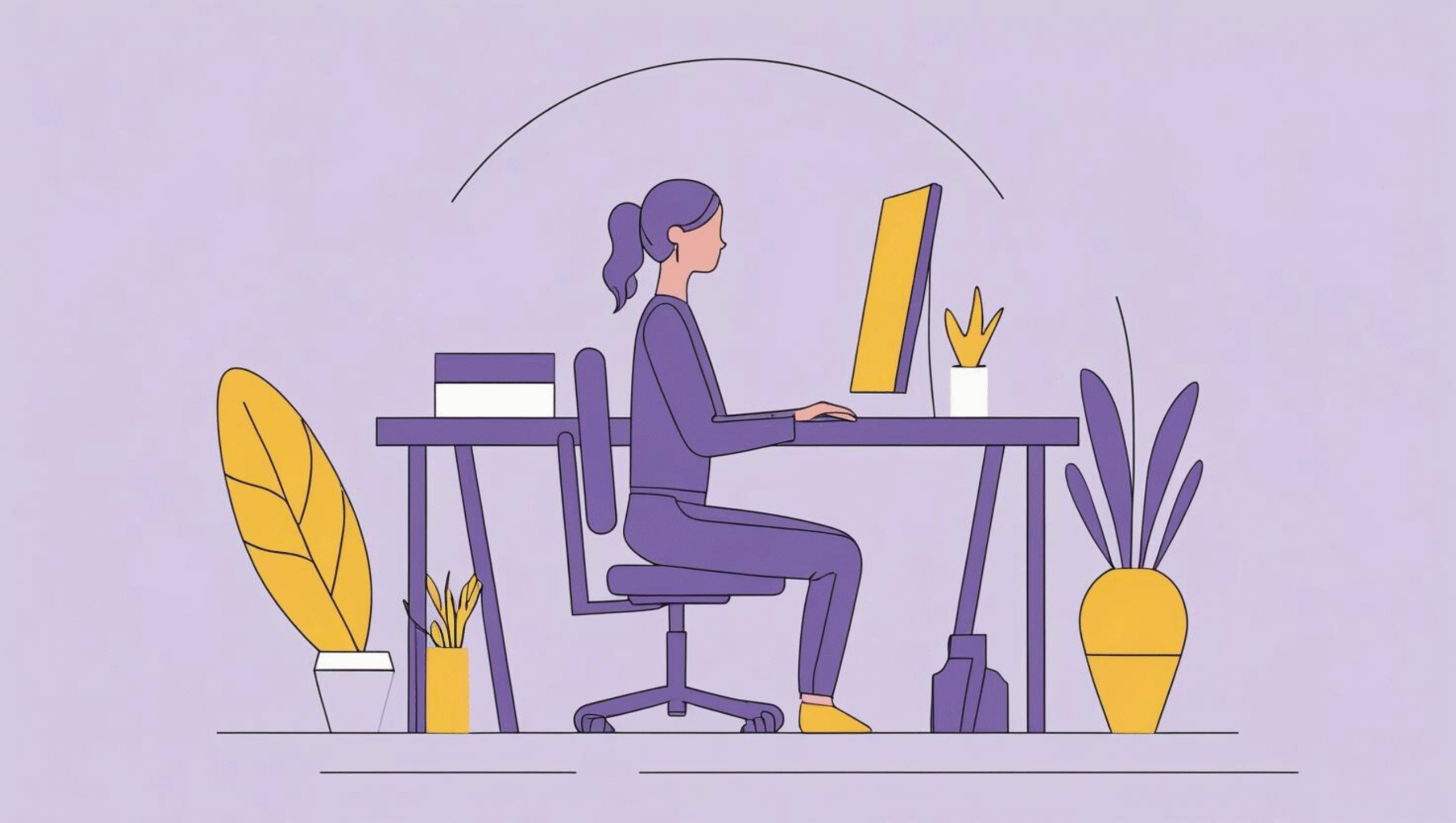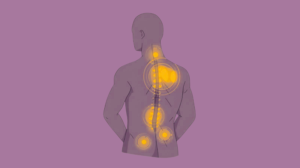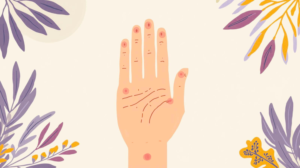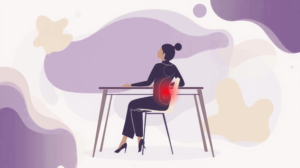Poor posture and incorrect ergonomics are silent contributors to chronic back, neck, and joint pain. Whether you’re working at a desk, commuting, lifting heavy objects, or simply standing in a queue, your body’s alignment plays a critical role in determining how much strain your muscles and joints endure. This article offers actionable, research-backed posture and ergonomics tips to help you reduce pain and improve your overall physical well-being.
What Is Posture, and Why Does It Matter?
Posture refers to the position in which you hold your body while standing, sitting, or lying down. Good posture maintains the natural curves of your spine, reducing stress on muscles, ligaments, and joints. Poor posture, on the other hand, can cause muscle imbalances, joint degeneration, and chronic pain.
According to the American Chiropractic Association, poor posture is a leading cause of musculoskeletal pain and dysfunction, particularly among office workers and older adults.
Understanding Ergonomics
Ergonomics is the science of designing environments and tasks to fit the physical capabilities and limitations of the human body. It aims to prevent injury and enhance comfort by improving the interaction between people and their workspaces. Proper ergonomics at work and home can prevent repetitive strain injuries (RSIs), neck tension, and chronic back pain.
Common Consequences of Poor Posture and Ergonomics
- Chronic back or neck pain
- Muscle fatigue and tension
- Poor blood circulation
- Headaches and migraines
- Disc degeneration or herniation
- Repetitive stress injuries (like carpal tunnel syndrome)
Key Posture Tips for Everyday Activities
Sitting Posture
- Keep your feet flat on the ground or on a footrest.
- Knees should be at a 90-degree angle and level with or slightly lower than hips.
- Sit back in your chair with your back supported by a lumbar roll or built-in backrest.
- Keep your shoulders relaxed, not slouched or elevated.
- Head should be aligned with your spine—not protruding forward.
Bonus Tip: Use a sit-stand desk or take breaks every 30–60 minutes to avoid static postures.
Standing Posture
- Distribute weight evenly on both feet.
- Keep knees slightly bent—don’t lock them.
- Engage your core muscles.
- Keep shoulders back and down.
- Head should be in line with your shoulders and hips.
Avoid: Standing with your hip jutted out to one side (common while waiting or carrying weight).
Walking Posture
- Keep your chin up and shoulders relaxed.
- Let your arms swing naturally.
- Land on your heel and roll through to your toes.
- Wear supportive footwear—avoid high heels or flip-flops for long walks.
Lifting Posture
- Stand close to the object with a wide stance.
- Bend at your hips and knees, not your back.
- Engage your core and keep your back straight.
- Lift using your leg muscles, not your lower back.
- Avoid twisting your torso while lifting or setting down objects.
Ergonomic Setup for Workstation Pain Relief
Desk and Chair Positioning
- Your desk should allow elbows to rest at a 90–110 degree angle.
- Use an ergonomic chair with lumbar support.
- Adjust the height so that your feet are flat on the floor or a footrest.
Computer Screen and Keyboard
- Monitor should be at eye level and an arm’s length away.
- Top of the screen should be at or just below eye level.
- Use a document holder if referencing papers.
- Keep keyboard and mouse on the same level to avoid wrist strain.
- Use a wrist rest if necessary, but don’t rely on it constantly.
Laptop Users
Laptops are not ergonomically ideal for long-term use. If unavoidable:
- Use a laptop stand or stack books to raise the screen to eye level.
- Use an external keyboard and mouse.
- Maintain an upright posture—don’t look down for extended periods.
Posture Tips for Specific Scenarios
Driving
- Adjust seat height so your hips are level with your knees.
- Sit close enough to the steering wheel to maintain a relaxed grip.
- Use lumbar support or a small pillow behind your lower back.
- Keep your head against the headrest.
Sleeping
- Use a mattress that supports the spine’s natural curvature.
- Sleep on your side with a pillow between your knees.
- If on your back, place a pillow under your knees.
- Avoid sleeping on your stomach—it flattens the spine and strains the neck.
Mobile Phone Use (Text Neck)
- Hold the phone at eye level.
- Avoid prolonged use without breaks.
- Use voice commands when possible.
- Stretch your neck and shoulders periodically.
Stretching and Strengthening Exercises to Support Good Posture
Regular stretching and strengthening can enhance postural muscles and prevent pain.
Daily Stretching Suggestions
- Chin tucks: Strengthen neck muscles and align the head.
- Chest opener: Stretch pectoral muscles to reduce shoulder rounding.
- Cat-Cow stretch: Improve spine mobility.
- Hamstring stretch: Reduce pelvic tilt that affects lower back posture.
Strengthening Exercises
- Planks: Strengthen the core.
- Rows: Target upper back muscles.
- Glute bridges: Stabilize hips and lower back.
- Wall angels: Improve shoulder mobility and posture.
Note: Always consult a physiotherapist or doctor before starting a new exercise routine.
Tools and Devices for Ergonomic Support
- Standing Desks: Alternate between sitting and standing.
- Footrests: Improve circulation and promote proper leg alignment.
- Lumbar Rolls: Maintain spine curvature while sitting.
- Ergonomic Keyboards and Mice: Reduce wrist strain.
- Blue Light Filters: Prevent eye strain from digital screens.
Posture and Ergonomics for Children and Teens
With increased screen time, children are prone to developing poor posture early.
- Monitor screen height and viewing time.
- Encourage frequent breaks and physical activity.
- Use properly sized desks and chairs.
- Teach them to carry backpacks correctly (both straps, not overloaded).
When to See a Professional
If you experience any of the following, seek help from a healthcare provider:
- Persistent back, neck, or shoulder pain
- Numbness or tingling in extremities
- Difficulty maintaining posture or balance
- Limited mobility or stiffness
A physiotherapist, chiropractor, or orthopedic specialist can assess your posture and recommend specific treatments or exercises tailored to your condition.
Conclusion
Posture and ergonomics play a foundational role in pain prevention and long-term musculoskeletal health. Small changes in how we sit, stand, move, and work can significantly reduce pain, improve productivity, and enhance quality of life. Incorporating posture-conscious habits and ergonomic setups in your daily routine is one of the most effective and non-invasive ways to maintain lifelong comfort.
References
- Robertson, M. M., Ciriello, V. M., & Garabet, A. M. (2013). Office ergonomics training and a sit-stand workstation: Effects on musculoskeletal and visual symptoms and performance of office workers. Applied Ergonomics, 44(1), 73–85. https://doi.org/10.1016/j.apergo.2012.05.005
- Peper, E., Booiman, A., Lin, I. M., & Harvey, R. (2016). Increase strength and mood with posture: Walk tall, stand tall, and feel tall. Biofeedback, 44(3), 126–133. https://doi.org/10.5298/1081-5937-44.3.04
- Sirajudeen, M. S., Pillai, P. S., & Alqahtani, M. S. (2022). Prevalence of text neck posture, smartphone addiction, and its association with neck disorders. PeerJ, 10, e14443. https://doi.org/10.7717/peerj.14443
- Sallinen, J., et al. (2011). Sedentary behavior and physical activity in working-age adults in relation to occupational and leisure time. BMC Public Health, 11, 273. https://doi.org/10.1186/1471-2458-11-273
- Wilkes, C., Kydd, R. R., Sagar, M., & Broadbent, E. (2017). Upright posture improves affect and fatigue in people with depressive symptoms. Journal of Behavior Therapy and Experimental Psychiatry, 54, 143–149. https://doi.org/10.1016/j.jbtep.2016.07.015
- Zaza, C. (1998). Playing-related musculoskeletal disorders in musicians: A systematic review of incidence and prevalence. Medical Problems of Performing Artists, 13(2), 55–61. https://doi.org/10.21091/mppa.1998.4039
- Franklin, M. E., Conner-Kerr, T., & Peavy, L. (1998). An analysis of posture and back pain in the first and third trimesters of pregnancy. Journal of Orthopaedic & Sports Physical Therapy, 28(3), 133–138. https://doi.org/10.2519/jospt.1998.28.3.133
- Shahidi, B., Haight, A., Maluf, K. S. (2013). Differential effects of mental concentration and acute psychosocial stress on cervical muscle activity and posture. Journal of Electromyography and Kinesiology, 23(5), 1082–1089. https://doi.org/10.1016/j.jelekin.2013.07.005
- Lyu, S. (2016). Posture Modification Effects Using Soft Materials Structures (Doctoral dissertation, University of Minnesota). https://conservancy.umn.edu/handle/11299/183305
- Canales, J. Z., Cordás, T. A., Fiquer, J. T., Cavalcante, A. F., & Moreno, R. A. (2010). Posture and body image in major depressive disorder: A controlled study. BMC Psychiatry, 10, 12. https://doi.org/10.1186/1471-244X-10-12























